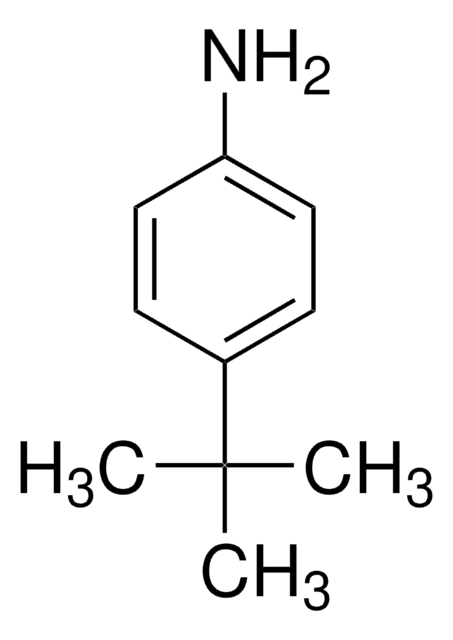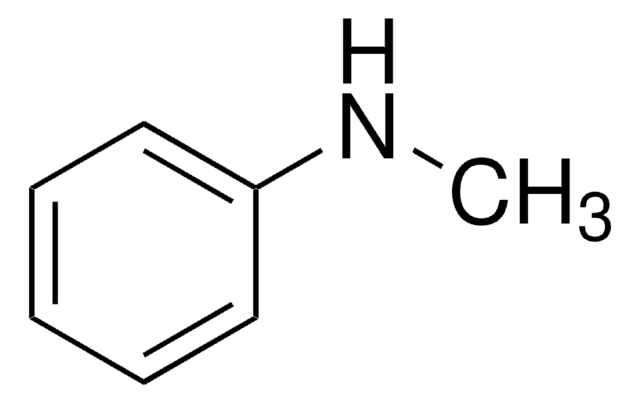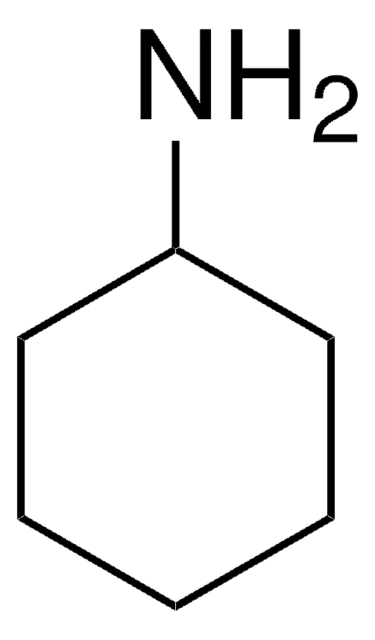132934
Aniline
ReagentPlus®, 99%
Sinonimo/i:
Aminobenzene, Benzenamine
About This Item
Prodotti consigliati
Densità del vapore
3.22 (185 °C, vs air)
Livello qualitativo
Tensione di vapore
0.7 mmHg ( 25 °C)
Nome Commerciale
ReagentPlus®
Saggio
99%
Forma fisica
liquid
Temp. autoaccensione
1139 °F
Limite di esplosione
11 %
Indice di rifrazione
n20/D 1.586 (lit.)
pH
8.8 (20 °C, 36 g/L)
P. eboll.
184 °C (lit.)
Punto di fusione
−6 °C (lit.)
Solubilità
water: soluble
Densità
1.022 g/mL at 25 °C (lit.)
Stringa SMILE
Nc1ccccc1
InChI
1S/C6H7N/c7-6-4-2-1-3-5-6/h1-5H,7H2
PAYRUJLWNCNPSJ-UHFFFAOYSA-N
Cerchi prodotti simili? Visita Guida al confronto tra prodotti
Categorie correlate
Descrizione generale
Applicazioni
Azioni biochim/fisiol
Proprietà fisiche
Note legali
Avvertenze
Danger
Indicazioni di pericolo
Classi di pericolo
Acute Tox. 3 Dermal - Acute Tox. 3 Inhalation - Acute Tox. 3 Oral - Aquatic Acute 1 - Aquatic Chronic 1 - Carc. 2 - Eye Dam. 1 - Muta. 2 - Skin Sens. 1 - STOT RE 1
Organi bersaglio
Blood
Codice della classe di stoccaggio
6.1A - Combustible acute toxic Cat. 1 and 2 / very toxic hazardous materials
Classe di pericolosità dell'acqua (WGK)
WGK 3
Punto d’infiammabilità (°F)
158.0 °F - closed cup
Punto d’infiammabilità (°C)
70 °C - closed cup
Dispositivi di protezione individuale
Eyeshields, Faceshields, Gloves, type ABEK (EN14387) respirator filter
Scegli una delle versioni più recenti:
Possiedi già questo prodotto?
I documenti relativi ai prodotti acquistati recentemente sono disponibili nell’Archivio dei documenti.
I clienti hanno visto anche
Il team dei nostri ricercatori vanta grande esperienza in tutte le aree della ricerca quali Life Science, scienza dei materiali, sintesi chimica, cromatografia, discipline analitiche, ecc..
Contatta l'Assistenza Tecnica.











